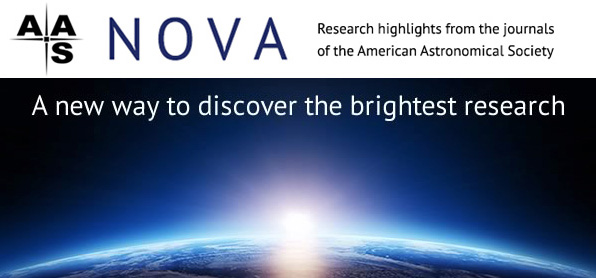Highlights from AAS Nova: 22 April - 5 May 2018

Susanna Kohler American Astronomical Society (AAS)
AAS Nova provides brief highlights of recently published articles from the AAS journals, i.e., The Astronomical Journal (AJ) and The Astrophysical Journal (ApJ), ApJ Letters, and ApJ Supplements. The website's intent is to gain broader exposure for AAS authors and to provide astronomy researchers and enthusiasts with summaries of recent, interesting research across a wide range of astronomical fields.
The following are the AAS Nova highlights from the past two weeks; follow the links to read more, or visit the AAS Nova webpage for more posts.
4 May 2018
New Target for an Old Method: Hubble Measures Globular Cluster Parallax
For the first time, the distance to a metal-poor globular cluster is determined using high-precision parallax measurements.
2 May 2018
Predicting the Number of Planets from TESS
NASA’s Transiting Exoplanet Survey Satellite has launched! Astrobites reports on how many exoplanets it is predicted to find.
1 May 2018
A Breathing Comet
Rosetta’s recent visit of the comet 67P/Churyumov-Gerasimenko yielded a number of discoveries. Astrobites here reports on one of the comet’s intriguing features: the molecular oxygen seen in its coma.
30 April 2018
Featured Image: Identifying a Glowing Shell
New nebulae are being discovered and classified every day — and this false-color image reveals one of the more recent objects of interest.
27 April 2018
When Supermassive Black Holes Wander
Are supermassive black holes found only at the centers of galaxies? A new study suggests not — and there may be a number of them wandering through our galaxy unseen.
25 April March 2018
Where Should We Look for Life?
A recent study explores whether Sun-like stars or low-mass M dwarfs are the best target as we search for exoplanets with detectable signatures of life.
24 April 2018
Why Jupiter Spins Fast, but Not Really Fast
Astrobites reports on a theory that could explain why Jupiter spins at the rate that it does.
23 April 2018
Heating the Chromosphere in the Quiet Sun
Could constant, tiny magnetic-field hiccups be responsible for heating the upper atmosphere of the Sun?


